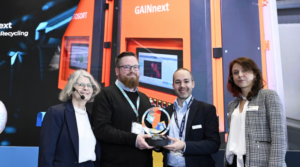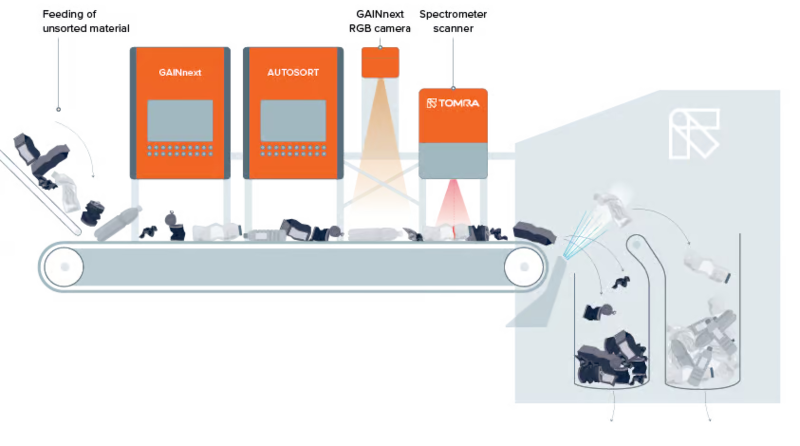Multiple material streams on a single sorting line
AI-powered sorting system with deep learning technology
Thanks to its integrated deep learning software, Tomra’s GAINnext reduces the need for manual sorting by identifying hard-to-classify and overlapping objects. It automates complex tasks beyond the capabilities of traditional optical waste sorting, using intelligent trajectory calculations for high-precision results.The solution recently has won ‘Recycling Machinery Innovation of the Year’ at the 2025 PRSE in Amsterdam.
GAINnext makes it possible to process multiple material streams on a single sorting line. It maximises the recovery and purity levels of valuable materials for recycling. The intelligent sorting system is claimed to combine sensor-based material identification and AI-based object recognition. The AI-based visual classification identifies thousands of objects in milliseconds, offering throughput processing with up to 2,000 ejections per minute, depending on the application. This adaptive technology can be optimised with network connectivity to continually improve performance and reduce downtime. Cloud-based monitoring and digital application services are available.

Tomra Recycling’s GAINnext has been awarded ‘Recycling Machinery Innovation of the Year’ in the 2025 Plastic Recycling Award Europe. This award was presented at the eighth annual awards ceremony which took place during PRSE 2025 in Amsterdam in early April. Sebastian Solbach, Team Leader Application Development – Deep Learning at Tomra Recycling, said, “This is an important milestone for everyone at Tomra, and it reflects the hard work and dedication of our team. GAINnext is an innovative recycling technology capable of solving complex sorting tasks in plastics, wood, paper, aluminium, and even food versus non-food plastic packaging. I am very grateful for the hard work and passion of our R&D and deep learning teams, as well as other colleagues at Tomra who put so much into the product.”
AI sorting for food-grade plastics
The system can achieve a purity level of around 95% in the recovery of food-grade plastic packaging by utilising AI-supported intelligence. With the deep learning technology, it is possible to achieve even higher purity rates of food-grade PET, HDPE and PP than with manual sorting, says Tomra. The high-accuracy, automated sorting system utilises object recognition to detect food vs non-food grade plastics and run multiple streams on one sorting line, creating new revenue opportunities. The solution enables operators to meet future EU Packaging and Packaging Waste Regulation (PPWR) targets, in which food-grade recycled plastics require 95% purity or higher, depending on the polymer.
PET packaging
As the most recycled plastic packaging in Europe, post-consumer PET waste is a high-value commodity when optimally sorted and processed with automated technologies. With AI-powered sorting systems and deep learning technology, recyclers benefit from the high-accuracy removal of opaque white bottles, polyester textiles and foils from PET streams. In addition to creating high-quality fractions for rPET that enable bottle-to-bottle recycling, operators can create new revenue streams by sorting opaque bottles for recycling.

